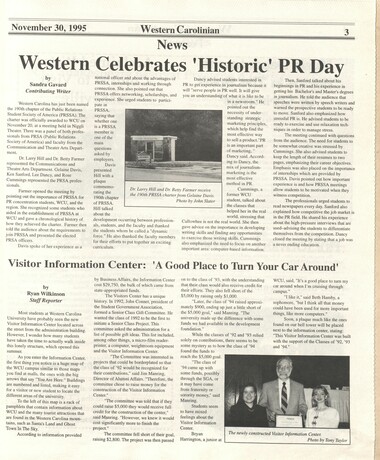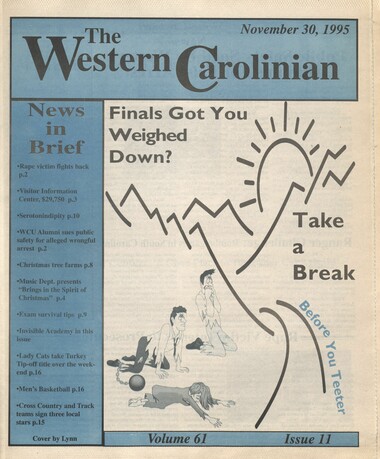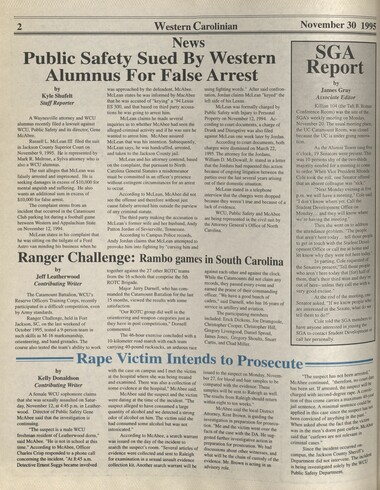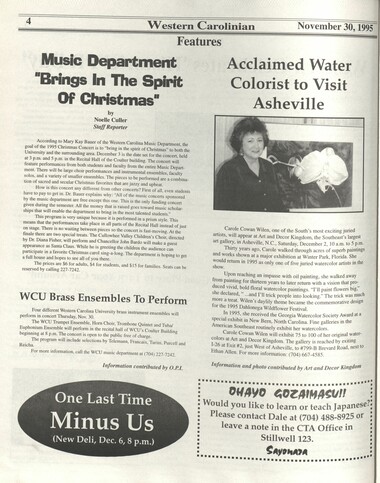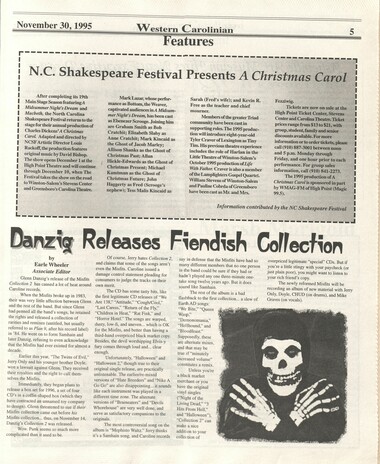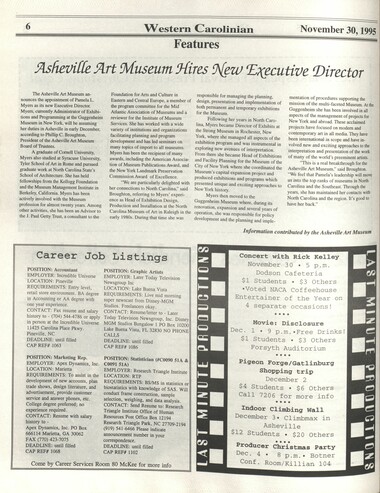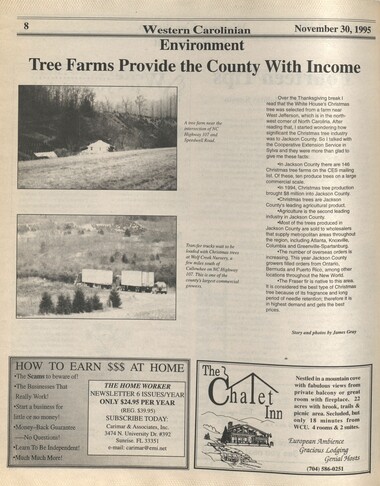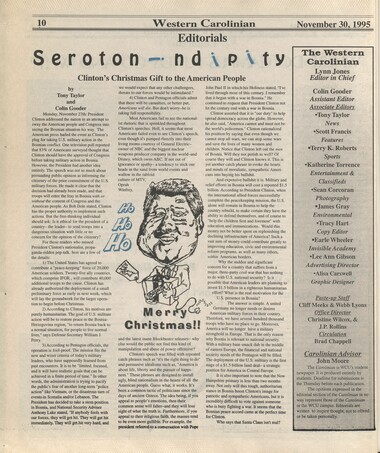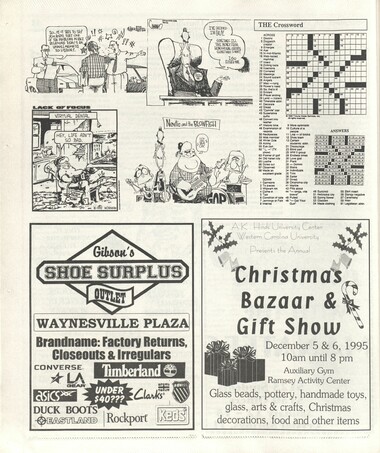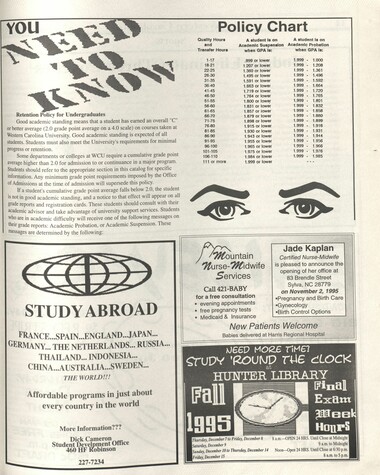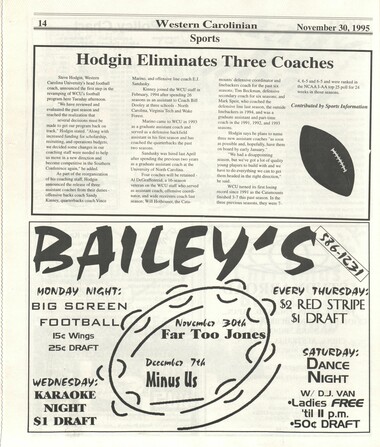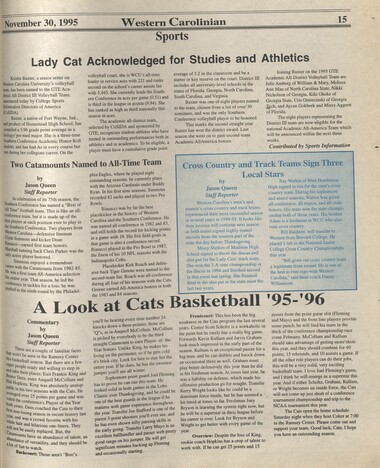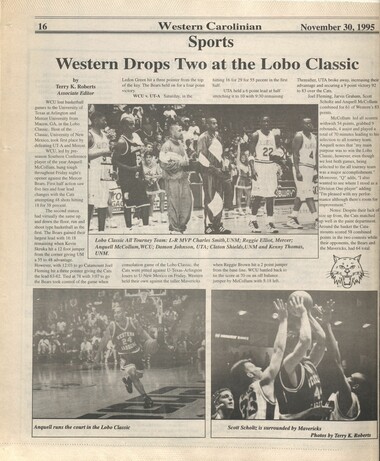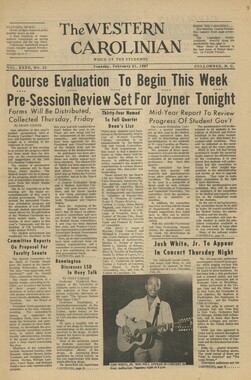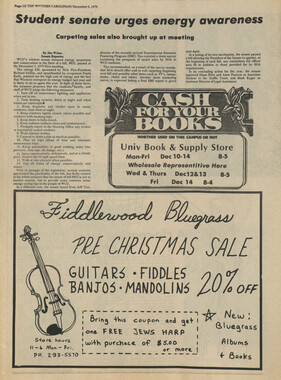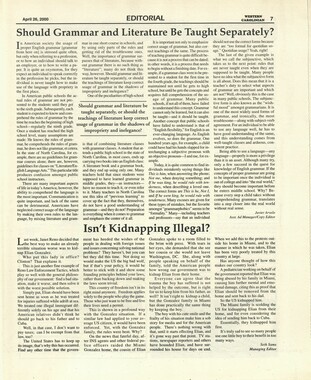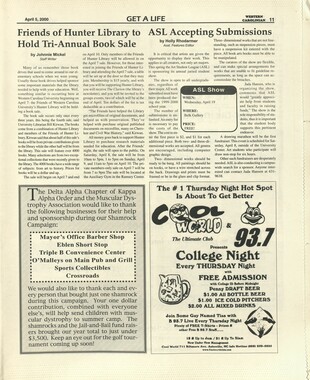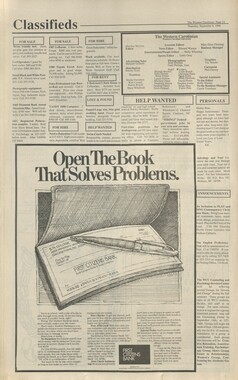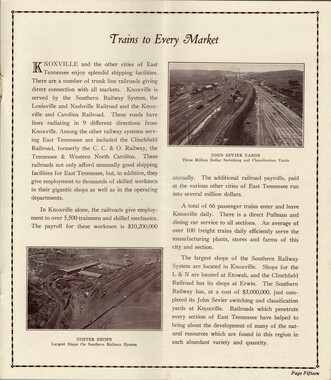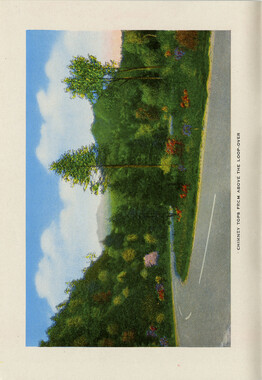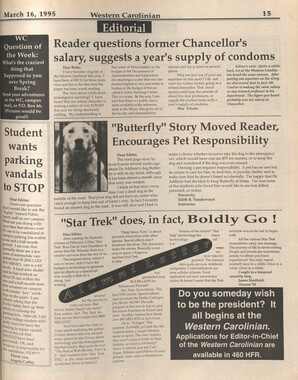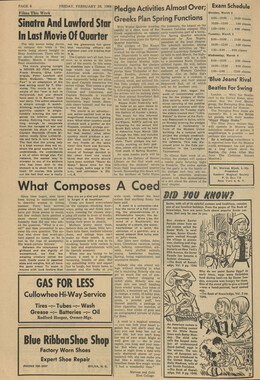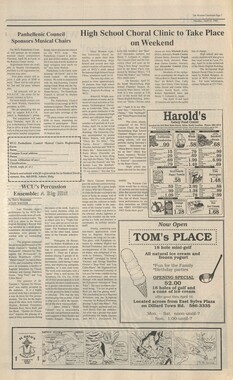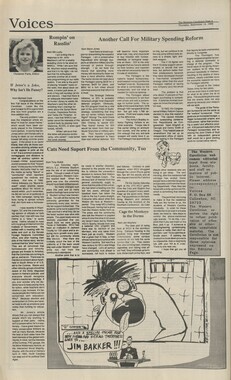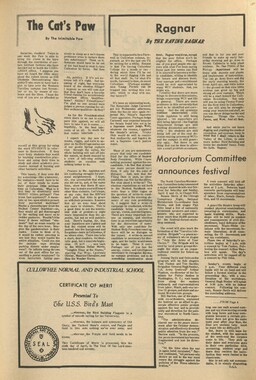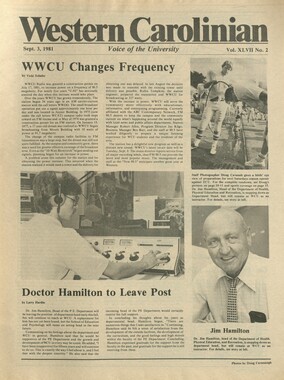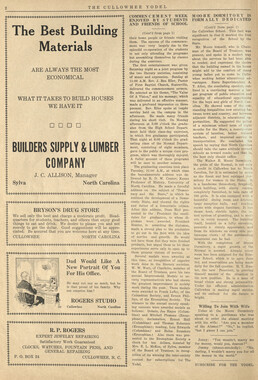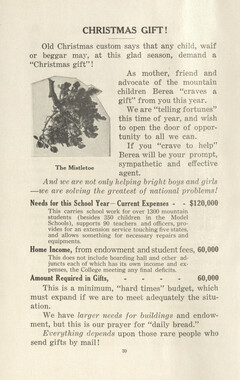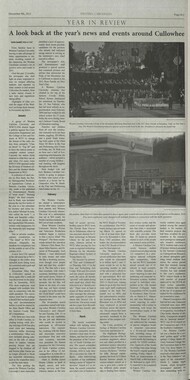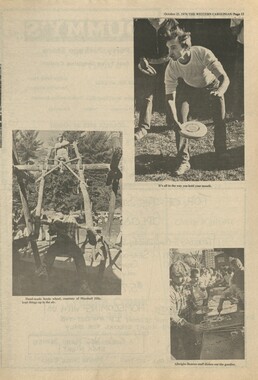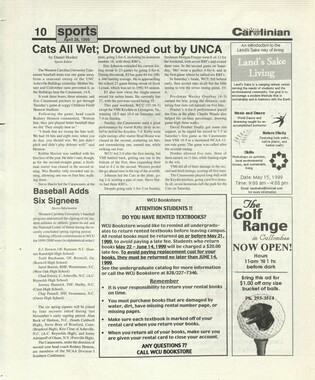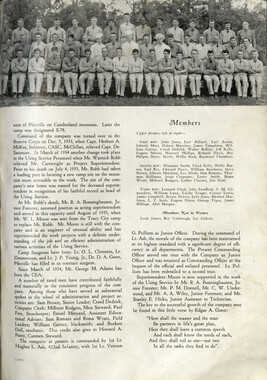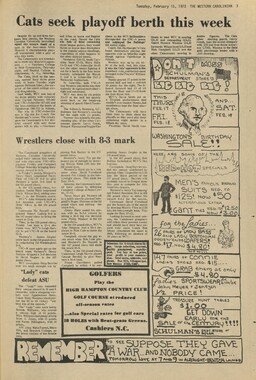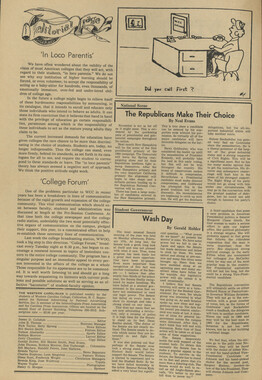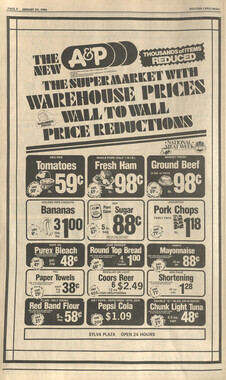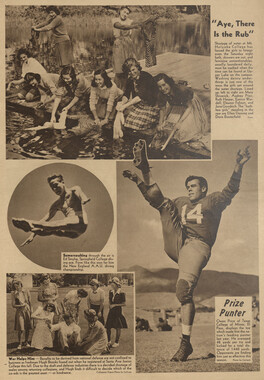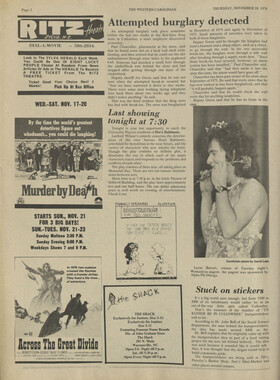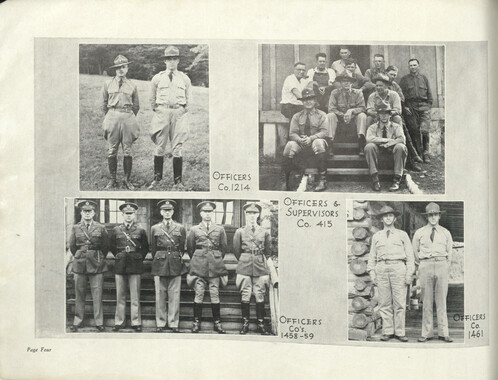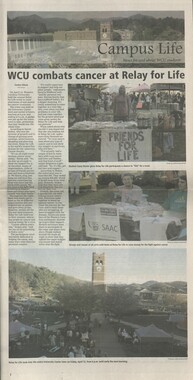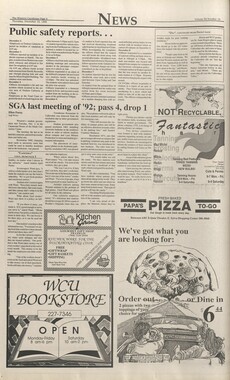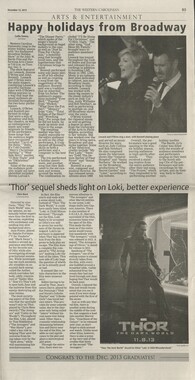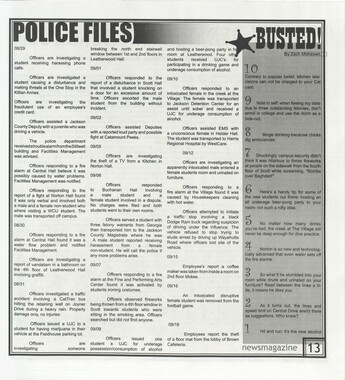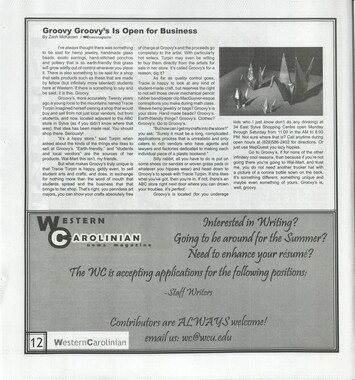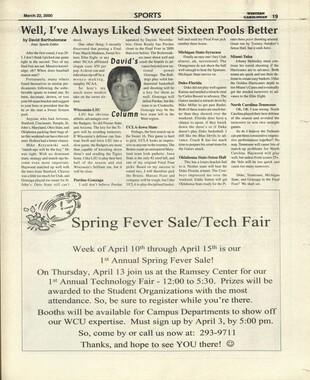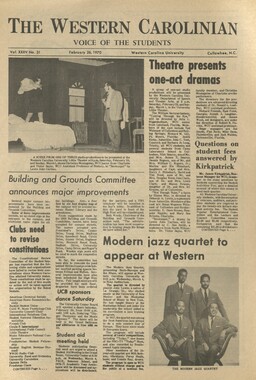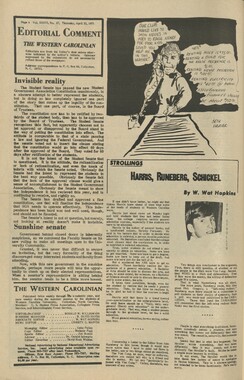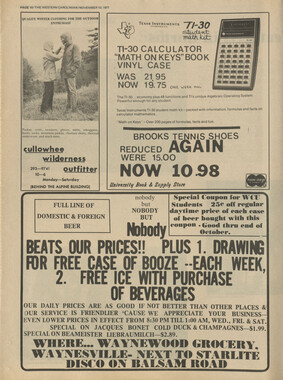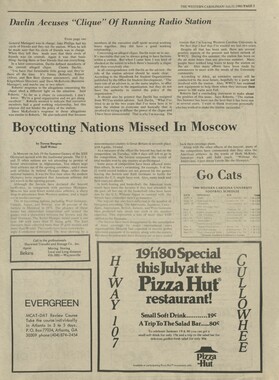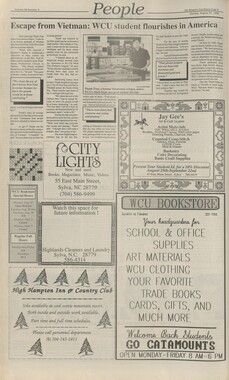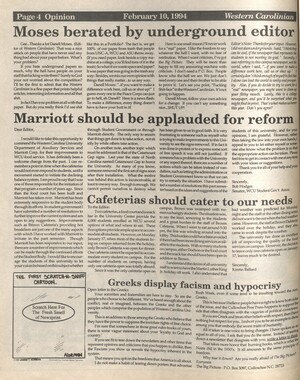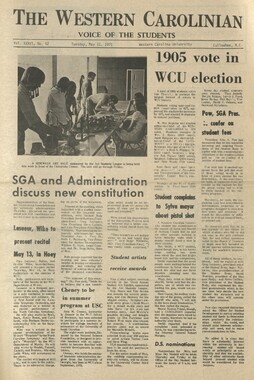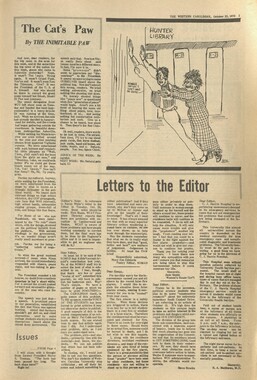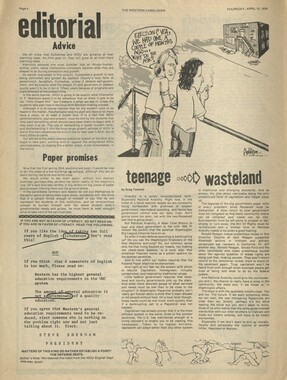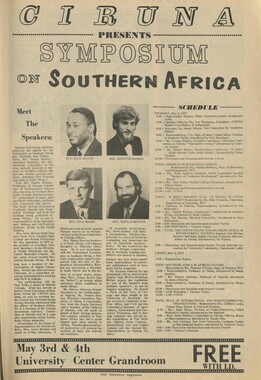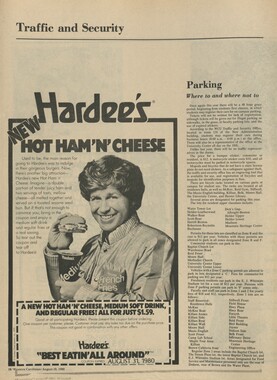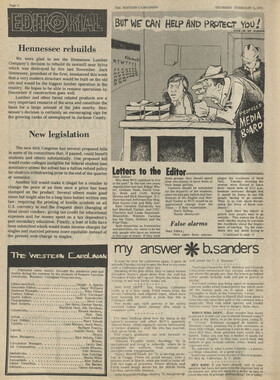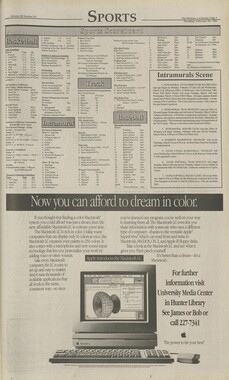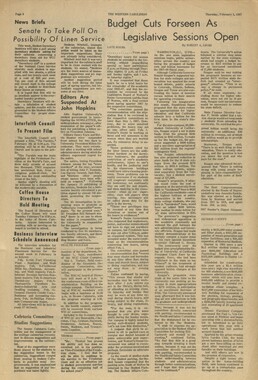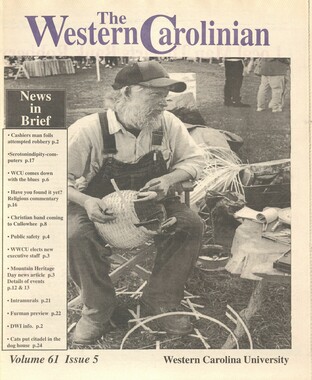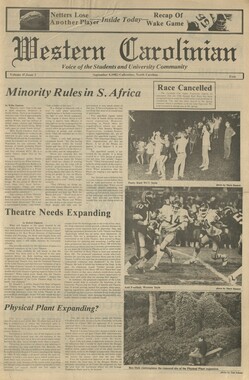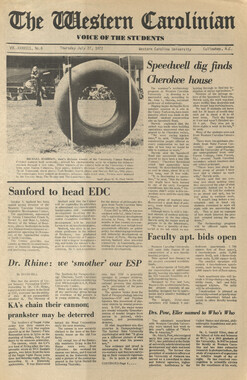Western Carolina University (21)
View all
- Canton Champion Fibre Company (2308)
- Cherokee Traditions (291)
- Civil War in Southern Appalachia (165)
- Craft Revival (1942)
- George Masa Collection (137)
- Great Smoky Mountains - A Park for America (2900)
- Highlights from Western Carolina University (422)
- Horace Kephart (973)
- Journeys Through Jackson (159)
- LGBTQIA+ Archive of Jackson County (85)
- Oral Histories of Western North Carolina (316)
- Picturing Appalachia (6797)
- Stories of Mountain Folk (413)
- Travel Western North Carolina (153)
- Western Carolina University Fine Art Museum Vitreograph Collection (129)
- Western Carolina University Herbarium (92)
- Western Carolina University: Making Memories (738)
- Western Carolina University Publications (2491)
- Western Carolina University Restricted Electronic Theses and Dissertations (146)
- Western North Carolina Regional Maps (71)
- World War II in Southern Appalachia (131)
University of North Carolina Asheville (6)
View all
- Allanstand Cottage Industries (62)
- Appalachian National Park Association (53)
- Bennett, Kelly, 1890-1974 (1463)
- Berry, Walter (76)
- Brasstown Carvers (40)
- Carver, George Washington, 1864?-1943 (26)
- Cathey, Joseph, 1803-1874 (1)
- Champion Fibre Company (233)
- Champion Paper and Fibre Company (297)
- Cherokee Indian Fair Association (16)
- Cherokee Language Program (22)
- Crowe, Amanda (40)
- Edmonston, Thomas Benton, 1842-1907 (7)
- Ensley, A. L. (Abraham Lincoln), 1865-1948 (275)
- Fromer, Irving Rhodes, 1913-1994 (70)
- George Butz (BFS 1907) (46)
- Goodrich, Frances Louisa (120)
- Grant, George Alexander, 1891-1964 (96)
- Heard, Marian Gladys (60)
- Kephart, Calvin, 1883-1969 (15)
- Kephart, Horace, 1862-1931 (313)
- Kephart, Laura, 1862-1954 (67)
- Laney, Gideon Thomas, 1889-1976 (439)
- Masa, George, 1881-1933 (61)
- McElhinney, William Julian, 1896-1953 (44)
- Niggli, Josephina, 1910-1983 (10)
- North Carolina Park Commission (105)
- Osborne, Kezia Stradley (9)
- Owens, Samuel Robert, 1918-1995 (11)
- Penland Weavers and Potters (36)
- Roberts, Vivienne (15)
- Roth, Albert, 1890-1974 (142)
- Schenck, Carl Alwin, 1868-1955 (1)
- Sherrill's Photography Studio (2565)
- Southern Highland Handicraft Guild (127)
- Southern Highlanders, Inc. (71)
- Stalcup, Jesse Bryson (46)
- Stearns, I. K. (213)
- Thompson, James Edward, 1880-1976 (226)
- United States. Indian Arts and Crafts Board (130)
- USFS (683)
- Vance, Zebulon Baird, 1830-1894 (1)
- Weaver, Zebulon, 1872-1948 (58)
- Western Carolina College (230)
- Western Carolina Teachers College (282)
- Western Carolina University (2008)
- Western Carolina University. Mountain Heritage Center (18)
- Whitman, Walt, 1819-1892 (10)
- Wilburn, Hiram Coleman, 1880-1967 (73)
- Williams, Isadora (3)
- Cain, Doreyl Ammons (0)
- Crittenden, Lorraine (0)
- Rhodes, Judy (0)
- Smith, Edward Clark (0)
- Appalachian Region, Southern (2940)
- Asheville (N.C.) (1944)
- Avery County (N.C.) (26)
- Blount County (Tenn.) (195)
- Buncombe County (N.C.) (1680)
- Cherokee County (N.C.) (283)
- Clay County (N.C.) (556)
- Graham County (N.C.) (238)
- Great Smoky Mountains National Park (N.C. and Tenn.) (525)
- Haywood County (N.C.) (3573)
- Henderson County (N.C.) (70)
- Jackson County (N.C.) (4919)
- Knox County (Tenn.) (35)
- Knoxville (Tenn.) (13)
- Lake Santeetlah (N.C.) (10)
- Macon County (N.C.) (421)
- Madison County (N.C.) (216)
- McDowell County (N.C.) (39)
- Mitchell County (N.C.) (135)
- Polk County (N.C.) (35)
- Qualla Boundary (982)
- Rutherford County (N.C.) (78)
- Swain County (N.C.) (2185)
- Transylvania County (N.C.) (270)
- Watauga County (N.C.) (12)
- Waynesville (N.C.) (86)
- Yancey County (N.C.) (72)
- Aerial Photographs (3)
- Aerial Views (60)
- Albums (books) (4)
- Articles (1)
- Artifacts (object Genre) (228)
- Bibliographies (1)
- Biography (general Genre) (2)
- Cards (information Artifacts) (38)
- Clippings (information Artifacts) (192)
- Copybooks (instructional Materials) (3)
- Crafts (art Genres) (622)
- Depictions (visual Works) (21)
- Design Drawings (1)
- Digital Moving Image Formats (2)
- Drawings (visual Works) (185)
- Envelopes (101)
- Exhibitions (events) (1)
- Facsimiles (reproductions) (1)
- Fiction (general Genre) (4)
- Financial Records (12)
- Fliers (printed Matter) (67)
- Glass Plate Negatives (381)
- Guidebooks (2)
- Internegatives (10)
- Interviews (817)
- Land Surveys (102)
- Letters (correspondence) (1045)
- Manuscripts (documents) (618)
- Maps (documents) (177)
- Memorandums (25)
- Minutes (administrative Records) (59)
- Negatives (photographs) (6090)
- Newsletters (1290)
- Newspapers (2)
- Notebooks (8)
- Occupation Currency (1)
- Paintings (visual Works) (1)
- Pen And Ink Drawings (1)
- Periodicals (193)
- Personal Narratives (10)
- Photographs (12976)
- Plans (maps) (1)
- Poetry (6)
- Portraits (4568)
- Postcards (329)
- Programs (documents) (181)
- Publications (documents) (2444)
- Questionnaires (65)
- Relief Prints (26)
- Sayings (literary Genre) (1)
- Scrapbooks (282)
- Sheet Music (2)
- Slides (photographs) (402)
- Songs (musical Compositions) (2)
- Sound Recordings (796)
- Specimens (92)
- Speeches (documents) (18)
- Tintypes (photographs) (8)
- Transcripts (324)
- Text Messages (0)
- A.L. Ensley Collection (275)
- Appalachian Industrial School Records (7)
- Appalachian National Park Association Records (336)
- Axley-Meroney Collection (2)
- Bayard Wootten Photograph Collection (20)
- Bethel Rural Community Organization Collection (7)
- Blumer Collection (5)
- C.W. Slagle Collection (20)
- Canton Area Historical Museum (2110)
- Carlos C. Campbell Collection (462)
- Cataloochee History Project (64)
- Cherokee Studies Collection (4)
- Daisy Dame Photograph Album (5)
- Daniel Boone VI Collection (1)
- Doris Ulmann Photograph Collection (112)
- Elizabeth H. Lasley Collection (1)
- Elizabeth Woolworth Szold Fleharty Collection (4)
- Frank Fry Collection (95)
- George Masa Collection (173)
- Gideon Laney Collection (452)
- Hazel Scarborough Collection (2)
- Hiram C. Wilburn Papers (28)
- Historic Photographs Collection (236)
- Horace Kephart Collection (861)
- Humbard Collection (33)
- Hunter and Weaver Families Collection (1)
- I. D. Blumenthal Collection (4)
- Isadora Williams Collection (4)
- Jesse Bryson Stalcup Collection (47)
- Jim Thompson Collection (224)
- John B. Battle Collection (7)
- John C. Campbell Folk School Records (80)
- John Parris Collection (6)
- Judaculla Rock project (2)
- Kelly Bennett Collection (1482)
- Love Family Papers (11)
- Major Wiley Parris Civil War Letters (3)
- Map Collection (12)
- McFee-Misemer Civil War Letters (34)
- Mountain Heritage Center Collection (4)
- Norburn - Robertson - Thomson Families Collection (44)
- Pauline Hood Collection (7)
- Pre-Guild Collection (2)
- Qualla Arts and Crafts Mutual Collection (12)
- R.A. Romanes Collection (681)
- Rosser H. Taylor Collection (1)
- Samuel Robert Owens Collection (94)
- Sara Madison Collection (144)
- Sherrill Studio Photo Collection (2558)
- Smoky Mountains Hiking Club Collection (616)
- Stories of Mountain Folk - Radio Programs (374)
- The Reporter, Western Carolina University (510)
- Venoy and Elizabeth Reed Collection (16)
- WCU Gender and Sexuality Oral History Project (32)
- WCU Mountain Heritage Center Oral Histories (25)
- WCU Oral History Collection - Mountain People, Mountain Lives (71)
- WCU Students Newspapers Collection (1923)
- Western North Carolina Tomorrow Black Oral History Project (69)
- William Williams Stringfield Collection (2)
- Zebulon Weaver Collection (109)
- African Americans (390)
- Appalachian Trail (35)
- Artisans (521)
- Cherokee art (84)
- Cherokee artists -- North Carolina (10)
- Cherokee language (21)
- Cherokee pottery (101)
- Cherokee women (208)
- Church buildings (190)
- Civilian Conservation Corps (U.S.) (111)
- College student newspapers and periodicals (2012)
- Dams (108)
- Dance (1023)
- Education (222)
- Floods (63)
- Folk music (1015)
- Forced removal, 1813-1903 (2)
- Forest conservation (220)
- Forests and forestry (1197)
- Gender nonconformity (4)
- Great Smoky Mountains National Park (N.C. and Tenn.) (181)
- Hunting (46)
- Landscape photography (25)
- Logging (119)
- Maps (83)
- Mines and mineral resources (9)
- North Carolina -- Maps (18)
- Paper industry (38)
- Postcards (255)
- Pottery (135)
- Railroad trains (72)
- Rural electrification -- North Carolina, Western (3)
- School integration -- Southern States (2)
- Segregation -- North Carolina, Western (5)
- Slavery (5)
- Sports (452)
- Storytelling (243)
- Waterfalls -- Great Smoky Mountains (N.C. and Tenn.) (66)
- Weaving -- Appalachian Region, Southern (280)
- Wood-carving -- Appalachian Region, Southern (328)
- World War, 1939-1945 (173)
Western Carolinian Volume 61 Number 11 (13)
Item
Item’s are ‘child’ level descriptions to ‘parent’ objects, (e.g. one page of a whole book).
-
-
November 30,1995 Western Carolinian News Western Celebrates 'Historic* PR Day by Sandra Gavard Contributing Writer Western Carolina has just been named the 190th chapter of the Public Relations Student Society of America (PRSSA). The charter was officially awarded to WCU on November 20, at a meeting held in Niggli Theater. There was a panel of both professionals from PRSA (Public Relations Society of America) and faculty from the Communication and Theater Arts Department. Dr. Larry Hill and Dr. Betty Farmer represented the Communications and Theatre Arts Department. Gelaine Davis, Ken Sanford, Lee Dancy, and Rose Cummings represented the PRSA professionals. Farmer opened the meeting by pointing out the importance of PRSSA for PR concentration students, WCU, and the region. She recognized some students who aided in the establishment of PRSSA at WCU and gave a chronological history of how they achieved the charter. Farmer then told the audience about the requirements to join PRSSA and presented the elected PRSA officers. Davis spoke of her experience as a national officer and about the advantages of PRSSA, internships and working through connection. She also pointed out that PRSSA offers networking, scholarships, and experience. She urged students to participate in PRSSA, saying that whether one is a PRSSA member is one of the main questions asked by employers. Davis presented Hill with a plaque commemorating the 190th chapter of PRSSA. Hill talked about the development occurring between professionals, students, and the faculty and thanked the students whom he called a "dynamic force." He also thanked the faculty members for their efforts to put together an exciting curriculum. Dr. Larry Hill and Dr. Betty Farmer receive the 190th PRSSA charter from Gelaine Davis. Photo by John Slater Dancy advised students interested in PR to get experience in journalism because it will "serve people in PR well. It will give you an understanding of what it is like to be in a newsroom." He pointed out the necessity of understanding strategic marketing principles, which help find the most effective way to sell a product."PR is an important part of marketing, " Dancy said. According to Dancy, the mix of journalism- marketing is the most effective method in PR. Cummings, a former WCU student, talked about the classes that helped her in the real world, stressing that Cullowhee is not the real world. She then gave advice on the importance in developing writing skills and finding any opportunities to exercise those writing skills. Cummings also emphasized the need to focus on another important area: computer-based information. Then, Sanford talked about his beginnings in PR and his experience in getting his Bachelor's and Master's degrees in journalism. He told the audience that speeches were written by speech writers and warned the prospective students to be ready to move. Sanford also emphasized how stressful PR is. He advised students to be ready to exercise and use relaxation techniques in order to manage stress. The meeting continued with questions from the audience. The need for students to be somewhat creative was stressed by Cummings. She also advised students to keep the length of their resumes to two pages, emphasizing their career objectives. Emphasis was also placed on the importance of internships which are provided by PRSSA. Davis pointed out how important experience is and how PRSSA meetings allow students to be motivated when they witness competition. The professionals urged students to read newspapers every day. Sanford also explained how competitive the job market is in the PR field. He shared his experience about the high-pressure interviews that are used-advising the students to differentiate themselves from the competition. Dancy closed the meeting by stating that a job was a never ending education. Visitor Information Center: f A Good Place to Turn Your Car Around* by Ryan Wilkinson StaffReporter Most students at Western Carolina University have probably seen the new Visitor Information Center located across the street from the administration building. However, I wonder how many students have taken the time to actually walk inside this lonely structure, which opened this summer. As you enter the Information Center, the first thing you notice is a huge map of the WCU campus similar to those maps you find at malls, the ones with the big arrows that say "You Are Here." Buildings are numbered and listed, making it easy for a visitor or new student to locate the different areas of the university. To the left of this map is a rack of pamphlets that contain information about WCU and the many tourist attractions that are found in the Western Carolina mountains, such as Santa's Land and Ghost Town In The Sky. According to information provided by Business Affairs, the Information Center cost $29,750, the bulk of which came from state-appropriated funds. The Visitors Center has a unique history. In 1992, John Connet, president of the Student Government Association, formed a Senior Class Gift Committee. He wanted the class of 1992 to be the first to initiate a Senior Class Project. This committee asked the administration for a list of possible gift ideas. This list included, among other things, a micro-film reader- printer, a computer, weightroom equipment and the Visitor Information Center. "The Committee was interested in projects that could be borderplated so that the class of '92 would be recognized for their contributions," said Jim Manring, Director of Alumni Affairs. "Therefore, the committee chose to raise money for the construction of the Visitor Information Center." "The committee was told that if they could raise $5,000 they would receive full credit for the construction of the center," said Manring. "However, we knew it would cost significantly more to finish the project." The committee fell short of their goal, raising $2,800. The project was then passed on to the class of '93, with the understanding that their class would also receive credit for their efforts. They also fell short of the $5,000 by raising only $ 1,000. "Later, the class of '94 raised approximately $900, ending up just a little short of the $5,000 goal," said Manring. "The university made up the difference with some funds we had available in the development foundation." While the classes of '92 and '93 relied solely on contributions, there seems to be some mystery as to how the class of '94 found the funds to reach the $5,000 goal. "The class of '94 came up with some funds, possibly through the SGA, or it may have come from fraternity or sorority money," said Manring. Students seem to have mixed feelings about the Visitor Information Center. Bryan Harrington, a junior at WCU, said, "It's a good place to turn my car around when I'm cruising through campus." "I like it," said Beth Hamby, a sophomore, "but I think all that money could have been used for more important things, like more computers." Soon, a plaque much like the ones found on our bell tower will be placed next to the information center, stating: "This Visitor Information Center was built with the support of the Classes of '92, '93 and '94." The newly constructed Visitor Information Center. Photo by Tony Taylor
Object
Object’s are ‘parent’ level descriptions to ‘children’ items, (e.g. a book with pages).
-
The Western Carolinian is Western Carolina University's student-run newspaper. The paper was published as the Cullowhee Yodel from 1924 to 1931 before changing its name to The Western Carolinian in 1933.
-
